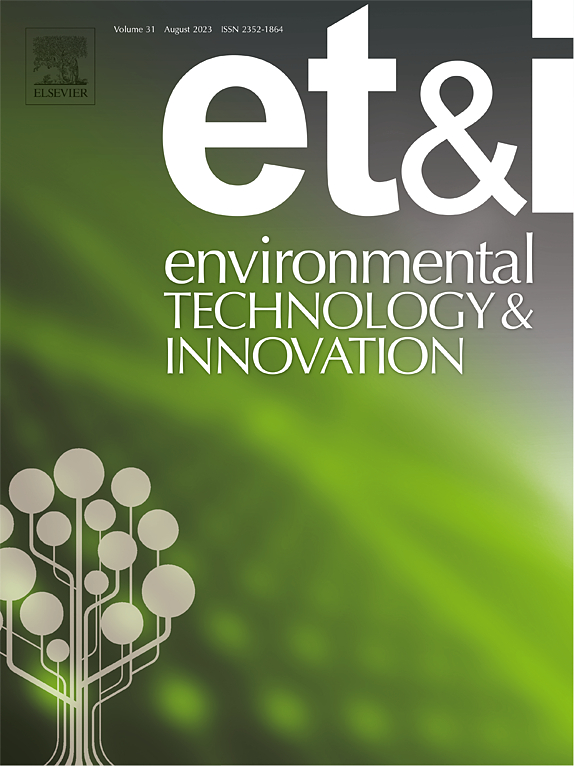废弃餐巾纸生物炭采用高性能设计,可快速去除抗生素
IF 6.7
2区 环境科学与生态学
Q1 BIOTECHNOLOGY & APPLIED MICROBIOLOGY
引用次数: 0
摘要
本研究以生活垃圾废弃餐巾纸(WN)为原料,经不同染料改性,通过碳化和活化法制备掺n生物炭。结果表明,染料的加入不仅优化了生物炭的理化性质,而且大大提高了生物炭的吸附性能。与未掺杂生物炭(BWN, 2173.13 m2/g)相比,掺n生物炭(BWN- cr、BWN- cv和BWN- mo)的比表面积提高了5.95 ~ 26.6 %,氮原子含量提高了0.50 ~ 2.03倍。在以盐酸四环素为吸附模型的吸附实验中,所有n掺杂生物炭的吸附量(938.71 ~ 1159.05 mg/g)均大于BWN(861.33 mg/g)等大多数吸附剂。经过10次循环使用,两种生物炭仍能保持65% %以上的性能,表明其再生能力稳定。本工作不仅制备了一系列可用于高效去除水中抗生素的生物炭,更重要的是为WN的高价值利用提供了新的策略,进一步释放了二次资源的应用潜力。本文章由计算机程序翻译,如有差异,请以英文原文为准。
Waste napkin biochar with high-performance designed for antibiotic rapidly removal
In this work, domestic refuse waste napkin (WN) was used as raw material, modified by different dyes and prepared to N-doped biochars via carbonation and activation methods. The results showed that the addition of dyes not only optimized the physicochemical properties of biochars, but also greatly improved the adsorption performances. The specific surface areas of N-doped biochars (BWN-CR, BWN-CV, and BWN-MO) were increased by 5.95–26.6 % compared with that of undoped biochar (BWN, 2173.13 m2/g), similarly, the content of nitrogen atoms in the modified biochars increased by 0.50–2.03 times. In the adsorption experiments using tetracycline hydrochloride as adsorption model, the adsorption capacities of all N-doped biochars (938.71–1159.05 mg/g) were greater than that of most adsorbents including BWN (861.33 mg/g). After 10 cycles of use, both all of the biochars can still maintain more than 65 % of the performance, indicating their stable regeneration ability. This work not only prepared a series of biochars that can be used to efficiently remove antibiotics from water, but more importantly provided a new strategy for the high-value utilization of WN and further released the application potential of secondary resources.
求助全文
通过发布文献求助,成功后即可免费获取论文全文。
去求助
来源期刊

Environmental Technology & Innovation
Environmental Science-General Environmental Science
CiteScore
14.00
自引率
4.20%
发文量
435
审稿时长
74 days
期刊介绍:
Environmental Technology & Innovation adopts a challenge-oriented approach to solutions by integrating natural sciences to promote a sustainable future. The journal aims to foster the creation and development of innovative products, technologies, and ideas that enhance the environment, with impacts across soil, air, water, and food in rural and urban areas.
As a platform for disseminating scientific evidence for environmental protection and sustainable development, the journal emphasizes fundamental science, methodologies, tools, techniques, and policy considerations. It emphasizes the importance of science and technology in environmental benefits, including smarter, cleaner technologies for environmental protection, more efficient resource processing methods, and the evidence supporting their effectiveness.
 求助内容:
求助内容: 应助结果提醒方式:
应助结果提醒方式:


